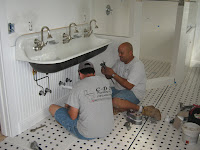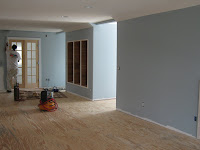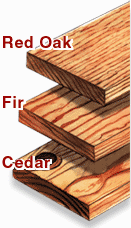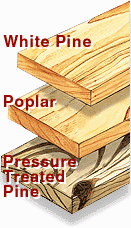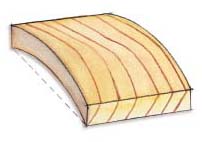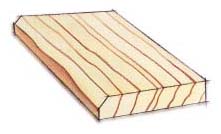SHE BUILT IT
Challenging the Plasticine Peabrains that Blithely surrender to Regimantation I say ................................................ SHE BUILT IT!!!
Tuesday, February 26, 2008
Friday, February 22, 2008
details offered
Click Image to enlargesing Andersen wood windows, Kohler fixtures, European-style cabinets, zoned and 90%+ efficient HVAC, GE Monogram appliances, granite and marble countertops, European tiles, authentic hand-scraped wood flooring, extensive interior wood work, Details offers the quality advantage like none other. Plus, when it comes to responsible environmental practices, Details delivers that too. Using a combination of SIP panels, spray foam insulation, tankless water heaters and Manabloc/pex water delivery systems, Details produces homes that provide energy efficiency and water savings significantly beyond required city codes.
MANASLOC@Manifold
The most efficient water
management technology available
A MANABLOCmanifold system works for the
homeowner. Unlike conventional systems which
simply deliver
water to
fixtures, the
MANABLOC
distributes the
water supply
quietly,
efficiently and
economically. It
also provides
the homeowner
betteroverall MANABLOC
ManifoldSystem
control of the plumbing system and makes the
plumbingsystem easier to service.
MANABLOC'S Benefits Include:
Faster Hot Water Delivery
Because MANABLOC's distribution lines are
dedicated to individual fixtures, less water is
needed to "flush" the line of cool water before the
hot water is delivered. This approach saves time,
energy and reduces the amount of water wasted
waiting for hot water,
Less Potential for Leaks
The weakest link in any plumbing system is the
fittings or
"connections". Since
most conventional
plumbing systems
use rigid pipe like
copper, fittings are
commonly used to
create bends and
Because the MANABLOC system uses flexible rEX
tubing, it greatly minimizes the need for fittings.
MANABLOC rEX tubing, called Vanex@,
can be
curved around obstacles without fittings, eliminating
many potential trouble spots in the system. Because
the MANABLOC uses individual lines for every
fixture, the need for plumbing system branches
which require fittings is eliminated. The system also
minimizes behind-the-wall fittings which can be
difficult and costly to repair.
Easy to Service
The MANABLOCsystem features individually
labeled shut-off valves for each distribution line and
fixture. When a fixture
has a leak on the hot
water side, for
example, the
homeowner can turn
off the valve for just
that spot, enabling the . .
rest of the system to Individual
Shut-off
Valves
run smoothly while the repair takes place. When
homeowners want to remodel, they can simply shut-
off the.water supply to the fixtures they're removing
and the rest of the home remains fully functional.
Quiet Operation
The flexible Vanex rEX tubing used with the
MANA BLOC system operates quietly. In copper and
other rigid
plumbing
systems, you
often hear noise
as the water
flows through
the pipes.
Flexible Vanex
rEX tubing
virtually
eliminates
Balanced Water Delivery
The built-in reservoir in the MANABLOC control
unit allows you to use multiple fixtures simul-
taneously without noticeable pressure and
temperature changes. This means you can run
the shower, flush a toilet or turn on a sink at the
same time without experiencing dramatic tem-
perature or pressure changes in water delivery.
Water and Energy Efficient
Less time waiting for hot water means less
water wasted. It also means less energy loss.
An independent study conducted by the Davis
Energy Group shows that a manifold plumbing
system can reduce energy and water waste by
about half in an average home.
MANABLOC
Vs.
SERIES Plumbing System
100%
90%
80%
70%
60%
50%
40%
30%
20%
MANIFOLD/ ~ Water
Wasted
"Parallel distributionsystemsare projectedto
save between 300 gallons per year for the
townhouse and 2600 gallons per year for the
detached home. Greater water savings are
projected for larger houses and distributed
fixtures than for smaller, compact houses with
fixtures clustered close to the water heater."
The MANABLOC
Manifold includes a
comprehensive
transferable warranty.
Many plumbing systems have no warranty at
all, leaving a homeowner vulnerable should
the system fail. The MANABLOC manifold
system is guaranteed for 10 years, with the
warranty covering the COMPLETE system
including Vanguard's tubing, fittings and the
control unit from manufacturing defect.
Complete Coverage
The MANABLOC warranty covers more than
system replacement. It also covers
reasonable replacement costs for damage to
personal property, including furnishings,
drywall and related items.
Transferable
The warranty can be transferred to future
owners of the system for a period of 10 years
from the date of installation. The warranty
transferability can assist you in the sale of
your home should you choose to move
Thursday, February 21, 2008
 Due to the irregular nature of the right stair wall we are going to add skirtboard type molding AFTER the treads and risers are installed. If we add them before then the nosing on the flooring on the loft will have to be extended to far over the edge
Due to the irregular nature of the right stair wall we are going to add skirtboard type molding AFTER the treads and risers are installed. If we add them before then the nosing on the flooring on the loft will have to be extended to far over the edge
Wednesday, February 20, 2008
Monday, February 18, 2008
One step forward and ten backwards
Click Image to enlargeWhen it comes to plumbers the only constant is problems. Today the sink and shower head were finally installed. The problems are numerous.
The shower head was incorrect and borrowed from the master bath which turned out to be wrong also.
The faucets when tested presented an altogether new problem. One faucet ran great hot water but as you turn on number 2 and 3 the hot water all but disappears and the shower is cold. . Looks like a multitude of problems. Either the electric demand water heater is not working or the manabloc pex system is failing. It looks to me to be a combination of both!. We shall see.
So today in an 8 hour period we undo all the work done in the last 16 months. Not to mention it took the plumbers all day to install 3 shower heads and one sink. A sink that was all but done during the last 8 hour day when they managed to install 1 toilet. (Sink being done means open the crate and attach 3 faucets with washers and nuts. ) The real fun was that they did not have the washers or the nuts to attach the faucets!!! AND When they went to install the other items they did not have any supplies! So 1 toilet in 8 hours!
Am I missing something here?
8 hours to install 1 toilet and put three faucets onto a sink?
8 more hours to hang that sink and attach 3 shower heads?
Oh I forgot they did manage to put a large sink on it's stand but after two visits still could not manage to put the faucets in.
???????????????????????????
At this rate it will be Christmas before we get all the plumbing correctly installed but it still may not be working correctly that is yet another challenge
Saturday, February 16, 2008
|
| | |||||
| |||||||
| Wood Basics | |||||||
| In the USA, there are over 1,000 species of trees. Of these, only about 100 are used for constructing and manufacturing wood products. From this group, it's best to pick the ones that are easiest to work with and most appealing to you. There are basically two kinds of wood from which to choose— hardwoods and softwoods. In addition, there are certain characteristics that are common in all wood types. Here are some common terms and definitions you should know:
| |||||||
| A Closer Look at Wood Grain | |||||||||||||||||
Grain pattern density determines strength. As you'd expect, a piece of lumber with a tight pattern is stronger than one with a loose grain pattern. And when building, a board's strength is maximized when other pieces run across the grain pattern — not parallel to it. | |||||||||||||||||
| Making the Grade |
| When you are choosing lumber, do you know what the stamp on the wood actually means? Fear not! We've deciphered those hieroglyphics for you. So the next time you go to the lumber yard, you'll sound like a pro. |
| Grades of Hardwoods | ||||||||||||||||||||
| Grading designation depends on the number of defects in a given length and width of hardwood boards. As with softwoods, a lower grade can be perfectly acceptable, depending on placement and usage. Hardwoods are graded by the National Hardwood Lumber Association. Here's a chart to help explain the grading system. Grades are listed from highest to lowest.
There are grades below #2 Common, but they are typically not suitable for woodworking. | ||||||||||||||||||||
| Grades of Softwoods | ||||||||||||||||||
| Softwoods are divided into two categories: dimensional lumber, with a grade based on strength, and appearance boards, which are typically used for woodworking projects. Grading of softwoods is overseen by a number of different agencies, so you will be more likely to find some variations in terminology. Grades listed here are from highest to lowest.
| ||||||||||||||||||
| Common Lumber Defects | |||||||||||||||
| |||||||||||||||
| Lumber Grading Stamp | |
While lumber of the same species and size is still at the mill, it is designated and separated by grade. It is then identified by a stamp and often inventoried by its grade and species. When selecting wood, be sure you look for its grading stamp because different lumberyards sometimes use different names for the same grade. (And remember, if you are having trouble figuring it all out, ask for help.) Grade designations depend on particular defects such as knots or wane. Keep your project final results in mind when selecting the grade of wood. Grade does not indicate consistency of color or grain patterns. Manufacturer: Mill's number, name, or symbol. (ex. 12) Certification mark: Symbol of agency providing quality-control supervision. (ex. WWP®) Grade: Often abbreviated. 1 Common shown. (ex. 1COM) Moisture content (MC:) Abbreviation for MC when board surfaced. MC 15 is 15 percent or less; Species mark: Symbol or abbreviation for types of tree. Example shown is Ponderosa pine. (Ex. PP) | |
Tuesday, February 05, 2008
Coming Soon
Click Image to enlargeThoughts and Ideas on Green Building. What is the real story behind LED lighting.
Also we will finish the DRI-core installation and plywood sub floor installation.
AND I will introduce another GREAT product for the kitchen. This one is really unique and worth waiting to see.
Yet to come
Innovative New Pool Designs and products
Artificial Turf. Pros and Cons
Floor finishes. Whats Hot Whats Not
Green building ideas that can impact air quality inside and out








